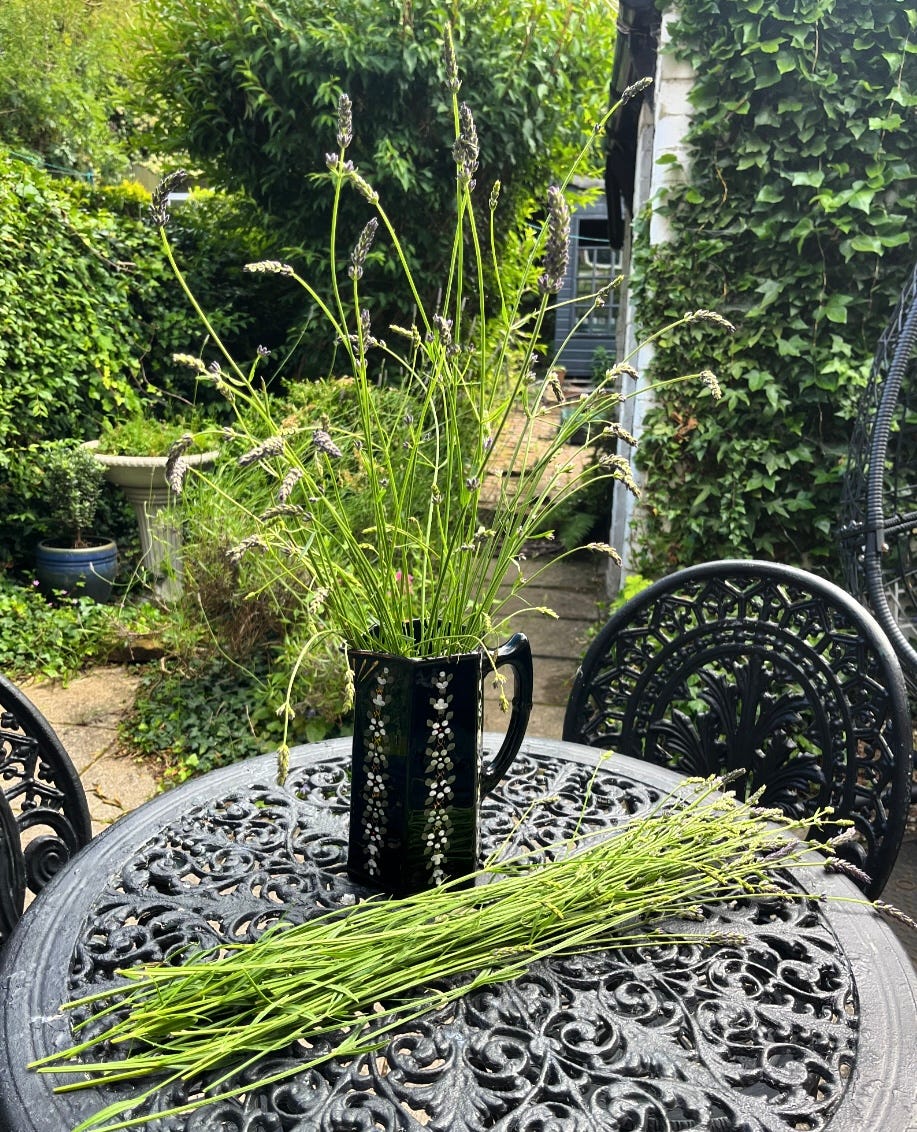Plant Spotlight: My love-hate relationship with Lavender
Sneezing and itching a side, let's learn a bit about lavender...
I thought I'd start my plant spotlight feature with the greenery that's taken me down with allergies this weekend: Lavender. While I might call it my sinuses' arch-nemesis, that wouldn't be entirely fair, as lavender has many beneficial qualities and can be useful for a various reasons. As I sneeze and itch in the presence of the lavender growing wild in my garden, I found myself curious to learn more about it.
First of all, how the hell did Lavender end up in our back gardens?
During the Dark Ages, monasteries cultivated lavender and other herbs, documenting their medicinal effects in ancient manuscripts. After Henry VIII dissolved the monasteries, lavender found its way into domestic gardens, often planted near laundry rooms. It was used to scent linens, freshen rooms, perfume soaps, potpourris, and added to bathwater.
Although whilst the most recognisable quality of lavender is its scent, there’s more to lavender than meets the nose…
Lavender is lucky
Lavender is a vibrant colour, often associated with wealth and prosperity. Placing lavender in the wealth corner of your home, typically the far left corner of a room, is believed to attract good fortune. In the 19th century, lavender bunches were sold on the streets of London to ward off evil and bring good luck.
Sleep, Anxiety, Stress, or Depression
Lavender is renowned for its soothing properties, helping you sleep and calm your mind. Like me, If you find yourself tossing and turning at night, a good lavender spray can be your best friend, my personal favourite is the Lush Twilight spray.
Migraines
It’s been said that Queen Elizabeth loved drinking lavender tea to treat her migraines and actively encouraged the development of lavender farms. There have also been a few studies that show the positive impact of massaging or inhaling lavender essential oil can have in reducing migraines.
Kills harmful bacteria
In the 17th century, grave robbers bathed in Four Thieves Vinegar, which included dried lavender, to avoid catching diseases and was even believed to be a remedy for avoiding the plague. Lavender is known for its antibacterial properties, and therefore a great option for cleaning down your home or reducing inflammation from skin conditions such as psoriasis and acne.
On a personal note, while I'm allergic to the lavender growing wild in my garden but I am fine with it in any other forms and I have used lavender essential oil on bruises and found it to be effective in reducing pain and improving healing time. That said, I advise everyone to do a patch test before applying lavender essential oil to avoid any adverse reactions.
Repels insects
Insects avoid lavender because its compounds, linalool and linalyl acetate, are toxic to them and mess with their nervous systems. The strong smell also overwhelms their senses, making it hard to find food or mates, so they steer clear. Understandably, lavender is a popular choice for patios or garden entrances. We have lavender planted near our garden seating area, which is both a blessing and a curse if, like me, you're allergic to wild lavender.
From promoting sleep and alleviating migraines to its antibacterial properties, lavender is truly a versatile and valuable plant. Despite my allergies to wild lavender, I can appreciate the many uses and historical significance.
If you've been inspired to grow lavender in your garden or already have it growing in your garden, keep an eye out for my next post where I'll share how to dry out lavender.





